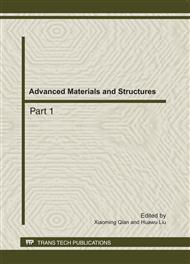p.347
p.351
p.355
p.359
p.363
p.368
p.372
p.379
p.383
Study on the Disaggregation of Photosensitizer Pentalysine β-Carbonyl-Phthalocyanine Zinc In Vitro
Abstract:
A novel photosensitizer, pentalysine β-carbonyl-phthalocyanine zinc [ZnPc-(Lys)5] has tendency to form aggregate in aqueous solution. The observed in vivo Photodynamic therapy (PDT) effect of ZnPc-(Lys)5 suggests a disaggregation mechanism. In this study, the equilibrium binding constant Ka, the numbers of binding sites n and the distance of Forster radii r between ZnPc-(Lys)5 and human serum albumin (HSA) are measured by Spectroscopy. A molecular model of HSA-ZnPc-(Lys)5 complex was generated according to these datum. This molecular model provides rationale that the molecular interaction between HSA and ZnPc-(Lys)5 facilitates the dissociation of ZnPc aggregates.
Info:
Periodical:
Pages:
363-367
Citation:
Online since:
September 2011
Keywords:
Price:
Сopyright:
© 2011 Trans Tech Publications Ltd. All Rights Reserved
Share:
Citation:


